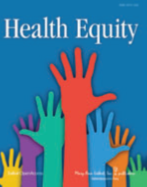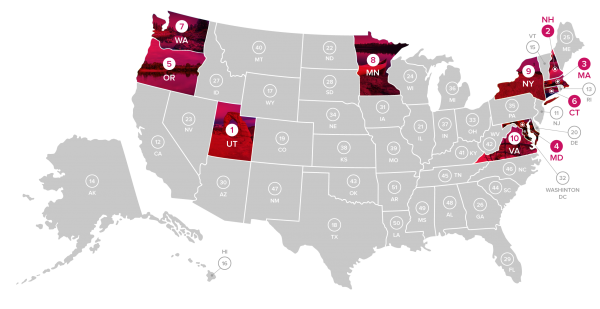Unhealthy Food Marketing Targets Hispanic Youth, UConn Researchers Find
/Hispanic children and youth, particularly youth in Spanish-speaking households, visited food/beverage websites at higher rates than their non-Hispanic counterparts, despite fewer visits to the Internet overall, according to a research study published by University of Connecticut faculty members.
“The frequency with which youth in Spanish-speaking households visited popular food and beverage websites compared with primarily English-speaking Hispanic youth raises further concerns due to the potential for these sites to reinforce preferences for an ‘‘American’’ diet among less acculturated youth, which could contribute to Hispanic youth’s worsening diet with greater acculturation,” Maia Hyary and Jennifer Harris point out in the inaugural issue of the journal Health Equity, published in September.
They stress that “Further research is needed to understand why Hispanic youth disproportionately visit food/beverage websites to help inform potential actions to reduce their exposure to unhealthy food marketing.”
The researchers warn that “given higher rates of obesity and diet-related diseases among Hispanic youth, food and beverage companies should not target marketing of unhealthy products to Hispanic youth online.”
Dr. Jennifer L. Harris is Director of Marketing Initiatives at the Rudd Center for Food Policy and Obesity and Associate Professor in Allied Health Sciences at University of Connecticut. She leads a multidisciplinary team of researchers who study food marketing to children, adolescents, and parents, and how it impacts their diets and health. Maia Hyary is a PhD student at the Heller School for Social Policy and Management at Brandeis University and a former Rudd Center Research Associate.
 Food and beverage companies often target marketing for nutrient-poor products such as candy, sugary drinks, snack foods, and fast-food restaurants to Hispanic audiences, including youth, the researchers state. They cite previous research that has documented disproportionate exposure to unhealthy food marketing by Hispanic youth in their communities and on TV, but theirs is the first examination of the phenomenon on the internet.
Food and beverage companies often target marketing for nutrient-poor products such as candy, sugary drinks, snack foods, and fast-food restaurants to Hispanic audiences, including youth, the researchers state. They cite previous research that has documented disproportionate exposure to unhealthy food marketing by Hispanic youth in their communities and on TV, but theirs is the first examination of the phenomenon on the internet.
Sites that were relatively more popular with Hispanic youth than with non-Hispanic youth included ChuckeCheese.com, HappyMeal.com, the Lunchables website, FrostedFlakes.com, and two Spanish language websites (ComidaKraft.com and McDonald’sMeEncanta.com). Among Hispanic children (under 12 years), ChuckECheese.com, FrootLoops.com, HappyMeal.com, TacoBell.com, LuckyCharms.com, and SubwayKids.com were relatively more popular.
Health Equity is a new peer-reviewed open access journal that “meets the urgent need for authoritative information about health disparities and health equity amon g vulnerable populations,” according to the publication’s website, “with the goal of providing optimal outcomes and ultimately health equity for all.” The journal intends to provide coverage ranging from translational research to prevention, diagnosis, treatment, and management of disease and illness, in order to serve as a primary resource for organizations and individuals who serve these populations at the community, state, regional, tribal, and national levels.
g vulnerable populations,” according to the publication’s website, “with the goal of providing optimal outcomes and ultimately health equity for all.” The journal intends to provide coverage ranging from translational research to prevention, diagnosis, treatment, and management of disease and illness, in order to serve as a primary resource for organizations and individuals who serve these populations at the community, state, regional, tribal, and national levels.
PHOTO: Dr. Jennifer L. Harris, Maia Hyary



 The analysis points out that a main reason why people don’t have access to broadband internet is due to a lack of income. Cited is a Pew Research poll that found 23 percent of people making under $30,000 per year don’t use the internet, possibly because of the high price for something they don’t consider a basic need. Most rural schools across the country still lack access to fiber and pay more than twice as much for bandwidth.
The analysis points out that a main reason why people don’t have access to broadband internet is due to a lack of income. Cited is a Pew Research poll that found 23 percent of people making under $30,000 per year don’t use the internet, possibly because of the high price for something they don’t consider a basic need. Most rural schools across the country still lack access to fiber and pay more than twice as much for bandwidth.































